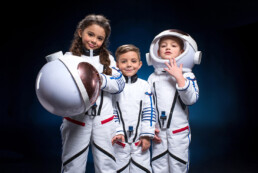The next reality of financial services
With its immersive experiences and growth opportunities, VR has become an empowering tool and a controversial topic,
As industries navigate into an intelligent era, let us look at how can we integrate and take advantage of these virtual frameworks.
I. Innovation is a process, not an idea.
In the history of economic evolution, an invention is of no economic significance until it is brought into use. An iPod would have been a curiosity if Apple have not innovated the business models of the music industry and entertainment. Entrepreneurs and business leaders are responsible for translating inventions into innovation, leveraging market & technology. Looking at the timeline of market innovation, we can appreciate that globalization didn’t happen seemingly overnight: desktop computers in the ’90s, the web in 2000, mobile tech in 2010. Around that time, my business partner Ariel and I were showcasing AR products using Unity made with QR’s on the new iPad in local marketing expos. We were on the right path, but ahead of our time. For many, VR is just a trend, but looking past the sci-fi flashy interfaces portrayed in movies, the Metaverse is here to stay. The speed, scale, and impact of machine learning and virtual frameworks in our lives are beyond measure.
With the pandemic as a catalyst, remote work took place, we skipped stores, supermarkets, restaurants and movie theaters, favoring delivery, streaming & online shopping. Later, basically, every meeting, conference, school, and church services moved virtually. Even my mom with 78 yo. understand the meaning of ‘avatar’ and ‘memoji’. From entertainment to retail, fashion shows, fandom events, company town halls, training sessions, shareholder meetings, and political referendums. VR moved past gaming to education, sports, health, finance, and politics. Yes, I said politics.
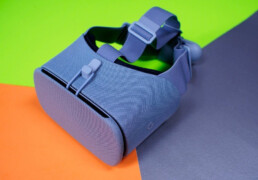

II.Machine Learning is not just for games & furniture mapping.
Simply explained, machine learning is the ability for a system to learn and improve from experience, without being explicitly programmed -and is one of the subset technologies that make up “Artificial Intelligence”.
The reason that machine learning has exploded in the last years is due to major improvements in GPU processing speed and the monumental amount of data that is available for machine learning and deep learning algorithms to feed on.
Machine learning, therefore, is redefining the way FinTech products are conceived and built, and companies are turning to AI-driven applications and VR/AR to help them make complex decisions and map and visualize unimaginable amounts of data. In 2018, the VR market was worth about US$7.9bn. In only 2 years from today, that figure will amp to $44.7bn. As for the financial services sector, the numbers are even bigger: 26,5 trillion dollars -larger than the US GDP, and twice as large as the Chinese economy- but these numbers don’t reflect the levels of efficiency and user engagement. The many inefficiencies in this sector make big banks, insurance companies, and private equity firms lose billions of dollars every year due to technology weak points and bureaucratic loopholes.
Fintech startups snatch the opportunity and armed with ambition, exploration and a user-centered approach were able to improve, revive and redefine ancient narratives and carve a place in a stale industry. Alipay eliminated cash transactions in China from Shanghai to Sichuan, just armed with a phone and a QR. And Stripe product simplicity is now become one of the largest payment processors in the US, gearing up for a major international expansion, even the native ATL startup Kabbage introduced an AI-based lending platform.
VR is not only for gaming or mapping furniture inside buildings, but can also see the internal organs of critical patients where seconds are a matter of life. ML and AI-based applications are the key to better decisions, smarter experiences, and successful outcomes.


III. Embrace Lab Culture, Exploration & Creative Research
Technological foundations are still evolving, no agreed standards across the multiple meta-verses have been set. Companies might be reluctant to invest in infrastructure, tools, and talent. As the path for virtual framework unfolds and VR tech is becoming mass-produced, we have to be ready. Artificial intelligence will drive massive value creation, and Users are demanding operational efficiency and cutting-edge technologies that can implement real-time features and solutions. Institutions and companies need to embrace Lab Culture, exploration & creative research. It’s key to collaborate with outside partners that can offer new perspectives and values, and integrate them across journeys, platforms, and experiences. Supporting developers and artists is also essential, so they can create state-of-the-art tools and interfaces to empower the ecosystem.
Most of the required technologies to create this ecosystem exist, and some are still work-in-progress. But this virtual place named ‘metaverse’ is already alive. Companies are still far from developing their own meta-verses, but heavily investing and partnering through experimentation, creativity, and understanding. Just like any other technology, discovery, or market, services will evolve to build out the content, the market, and the availability. The industry is catching, but some institutions struggle to deliver engaging banking solutions and omnichannel brand communication -more often focusing on the product and not the users- But consider VR framework as an opportunity to get ahead of the competition, increase efficiency in certain operations and enhancing the overall user experience.
The virtual marketplace is an organic extension for financial technology, the time and cost savings, plus benefits, are ideal for users and institutions. Users can enjoy premium service with AI assistance, discover ways to improve portfolio, take advantage of customized financial opportunities, and have real-time access to all the services the traditional bank can offer. And we haven’t talked about NFTs and blockchain-based currencies -two major components of the metaverse revolution. ReedPOP recently unveiled “Metaverse Memberships” programs that offer benefits in both physical and digital throughout their Comic-Con events. I worked with Airline loyalty programs in the past, and this could be the next evolution in a billion-dollar industry.


The virtual framework will drive economic opportunities. For companies, to make accurate and faster decisions, supporting business and partners throughout their digital transformation journey. For users, the same, enabling better experiences and shaping unique narratives and relationships. A place filled with all the opportunities you can imagine, with a single interface that adapts to each user in real-time, regardless of the hardware, language, and location, creating their own path and focusing on discovery. A truly immersive user-centered experience. For us, it’s time to be creative, collaborative & strategic, inspiring clients, and audiences to create value and manifest the change that matters.
Unleash your DX development team experience
The Developer Experience (DX) covers a wide range of human factors, perceptions, and elements that impact productivity, quality, and reliability of your product. How can we make it better?
In many teams, DX (developers’ experience) is often an afterthought. There are a lot of resources and emphasis on User Experience (UX) but developers are users, and actually are the first that use your product, frameworks, and tools. As customer satisfaction and happiness are crucial for the success of your product, the same goes for the people involved in the process to create that project. Positive mindset or ‘happy’ developers create exceptional software in the long term. A positive developer experience ensures that your developers are happy, satisfied, and less likely to leave your team. It’s not just a framework but a focus on the importance of autonomy, culture, network, and experiences, both individual, tribal and company-wide.
The factors range from emotional to technical, small details and dynamics that make it or break it, like a line of code. Motivation, environment, tools, and challenges all come into play when it comes to a good DX. how we can improve it and make it wonderful?

We focus on three main areas:
Infrastructure (development, management tools, programming languages, libraries, platforms, and methods) Emotional perception (trust, respect, solidarity, belonging), and Value (personal and project goals, aspirations, contributions, success, and commitment).
1. Infrastructure

Find a compromise between simple and more complex architecture. Simple means more pain later, complex brings more pain now. Consider the size of your project and your team. Good architecture is difficult to break, has short feedback loops and allows better analysis.
Automation is also the key to high-performance teams, like giving superpowers. The proper tools will help your team to
Deliver value to production fast, anticipate and fix bugs, optimize and build high-quality codebases. It gives teams freedom, skipping allowing more confidence. Also, well-defined processes reduce anxiety, give you discipline and consistent steps that fuels creativity, clarity, and flow. From QA, deployment, feedback, and even a particular project onboarding.
2. Emotional synergy
Trust, friendliness, and honesty, emphasize sincerity with respect in every detail. Great sense of ownership, responsibility, and success, both personally and within the company.A unified goal creates also a mature and healthy environment, from inside the team, division, and the company as a whole.
Also, this synergy allows for failure and inspires courage. Risks should always be calculated, and developers have to be aware of how interconnected their actions are. It is crucial to be able to take responsibility. Again, team discipline relieves anxiety, tension and creates space for experimentation. Even when you are busy, small moments of relax can renew individual and team creative energy flow.
As leaders, empathizing with your users, stakeholders, and team means understanding their needs within the project. It also plays a major role when working cross-functionally. A wider background experience enables team leaders to intuit the needs of the internal users involved, improving DX in an epic manner and facilitating communication, feedback with other key stakeholders, and high engagement within their specific roles. A people-driven, autonomous approach for scaling agile by focusing on communication, accountability, and quality will deliver innovation and productivity to teams and organizations.

3. Value & Purpouse
The purpose is very important, in your company, but also in each individual and team. Making money should not be the only goal. A company’s culture itself is the most important brainware. A sense of impact, understanding that their work matters and they are inspiring the world through improving someone else’s life. When I started in Wunderman, one of my focuses was to reverse the high rate of talent churn in development to design teams. Just understanding the impact, reach and influence of the work everyone did, created a sense of ownership, professionalism that impacted productivity, quality, and reliability of the product but also lead the team evolution to a high-performance autonomous unit. Considering your team’s emotional cost is key to your product success.

Although this brief insight covers concepts and knowledge I use daily on personal and professional projects to ship products or experiences, Im aware that it takes time and effort also from the day-to-day workflow, and will transform positively and happily your development outcomes. Trust me, small changes can deliver huge impact and difference in your team workflow. The next article will cover more technical tips to improve DX. I’d love to see how this could impact your team experience. Hit me up on Twitter and let me know how can we inspire more of this. Be tuned for next updates and thanks for reading!
Creating a team identity.
How do we inspire and support our teams to deliver their best performance, creativity, and unique point of view into the game? 5 simple approaches to leverage your global team into a collaborative, focused, and engaging global workforce.
Global teams located in different geographies are often viewed more as a challenge than an advantage. The key factor is to draw from its diversity and abilities to bring different cultural experiences to improve, built, and expand not only projects but also the unique company culture. The growth and evolution of a project balance individual contributions and collective engagement and streamlined vision.The challenge is not in the level of social distance, but in the degree of emotional connection among team members. Fostering positive relational dynamics, interactive communications, and team building strategies to mentor individuals and teams, to overcome and negotiate tensions across timezones, countries, and cultures.
Misunderstandings within the global teams can either produce costly consequences or remarkable innovations, creating millions of dollars in value for their customers and shareholders.
Creating a team identity beyond language.
Audiences and markets have become globalized and teams have grown to an amazing ecosystem of culturally diverse talents, inspiring brands across the globe with unlimited growth opportunity and fresh perspectives. We have offshore teams with copywriters and designers in London, development & QC in Buenos Aires, software engineers in Chennai and marketing teams in NYC. Maybe your campus in Prague has members from different nationalities.
Inspiring and managing teams is a wonderful challenge, and with team members from different countries and different cultural backgrounds and languages, it requires also a fresh and diverse perspective as their teams itself. Wherever your team is in one office or globally dispersed, they are expected to deliver their best performance, creativity, and unique point of view into the game. So, how do we leverage, support and inspire such a diverse workforce?
Language and cultural differences.
One of the key components of every collaborative relationship is trust, and open communication among team members is key. Language proficiency is a challenge and can undermine trust between its members. Colleagues with different levels of proficiency could be perceived as less communicative or reliable, undermining healthy trust-building in each other’s abilities and skills. It is crucial to find ways to transform these differences, into creative energy. It’s important to explore those differences so we know how to interact and grow as a group.
A way to encourage this understanding of diversity is to create unstructured moments, not necessarily ‘a meeting’- where everyone can share their cultural background and expectations about communication and working style. The team gets to learn more about each other by listening, sharing and asking questions and sharing about their backgrounds, even to learn what kind of food they like, or learn a traditional recipe from your home. It’s amazing when teams discover that we are not that different after all.
Teams experience a lot of pressure, and members of multi-language teams frequently relieve stress by switching into their native tongue, inadvertently excluding other teammates from their conversations. We need to reverse language barriers and communication anxiety by encouraging open dialogue in teams as a whole, creating a “team identity” equipped with amazing different strengths and unique backgrounds, united in one vision. Like a team of superheroes.
Reducing language gap
The success and strength of every multi-national team reside in one basic -but rather complex- aspect: communication. How can you measure the degree of language connection among team members? When people come from similar nationalities, the level of ‘language distance’ is usually low. Even if they come from different backgrounds, people can interact formally and informally, align, and build trust. They arrive at a common understanding of what certain behaviors mean, and they feel close and congenial, which fosters good teamwork.
Coworkers who are geographically separated, or come from different countries and cultures, could experience some kind of language anxiety that could prevent interactions. This originates from the inability to communicate, missing information and/or negative evaluation. This negative dynamics reduce team performance, and especially for creatives, artist, and designers, where creative energy, collaborative expression, and multi-team interaction is vital.
Creating a team identity
In a team, is important that everyone gets enough speaking time, and that everyone knows what they’re working toward. What’s our vision and why we are doing what we do. Bringing everyone around common goals and a unified vision is key. I can not stress this more! as evident it may seem, this is poorly done, and team members spot it quickly when is fake. Is has to be an honest take, not a speech. That’s why you need to know the brand, the clients, the team, the story. You need to be the first one to believe it to be able to inspire it. Highlighting the importance of each diverse skill in your team will level up the group dynamics, and also how much value the team is contributing to the success of the service, product or brand. Be open about the unique appreciation for everyone’s input and encourage meta-communication. Each particular story amounts to create a more solid, trustworthy and collaborative team.
Bringing everyone around a unified vision is key. Its has to be an honest take, not a speech. That’s why you need to know the brand, the clients, the team, the story. You need to be the first one to believe it to be able to inspire it.
Break down your common goal into actionable steps and outline each individual’s role and responsibilities. This reduces the chance of misunderstandings and lets everyone know that their contribution matters. Clarity of each team member’s contribution also makes it easier to address team performance as a whole. It sets expectations for what needs to be done, by who and when.
Building a team identity also entails finding common things between team members. Make space in your working day to promote team interactions, to get to appreciate each other team members. Perhaps there are teammates who share the same taste in movies, music or TV shows. Some may bond over hobbies or share information about their families, etc. Personal connections within the team make it easier to work together, trust and have a solid team identity.

To be continued…
Analytics to Predict Blockbusters
Analytics helps us to connect pieces of research, identifying the right elements to create a unique experience. “Jurassic World” movie is the perfect case study on how research, facts and behaviors can support a multibillion dollar franchise.
Not Another Sequel
We all went ”ugh… please-not-another-sequel!” when we heard the rumor of a Jurassic Park sequel. Apparently, we were wrong. Against all odds and rumors, the dino-action sequel literally ate box office records, with a staggering 208.8 million domestically this weekend, making it the highest grossing opening weekend film of all time.
As of today, Mr. T-Rex is the richest dinusaur in the world. 1.672 billion USD box office worldwide. Raawrr!! Grossing a total of $652,270,625 in USA and $1,019,442,583 internationally. Roughly $600 millions are from Asian markets, China and South Korea leading in Asia; UK, France, and Germany in Europe and finally Mexico and Brazil in Latin America respectively.
The industry is changing the way they do business and technology is doing its part. Analytics tools had proven to be successful, making connections between pieces of research, identifying facts and behaviors. Jurassic World is relevant example of this The audience ‘body language’ was pretty clear: On that weekend, the re-post rate for Jurassic videos on YouTube was 45 to 1 (the average is 9 to 1). The trailer on the official Universal channel got 66.6m views (multi-channel networks money well invested) Twitter almost broke: #JurassicWorld peaked at 63K. The “conversation” for the film was very high and very positive on social media that weekend. Thousands and millions share trailers with their community, on multiple social channels. And that’s intent of purchase…like a kiss. Plus, no big sports events or soccer matches on TV that weekend. Add shirtless Chris Pratt and school calendars and TV were packed with dino-theme curricula. Finally, people just love seeing Pterosaurs munching on tourists! Go family-friendly entertainment! Jurassic World broke box office, scoring the biggest opening weekend in history with a sweet $511.8 million in tickets sales worldwide, outdoing even Harry Potter.
Timing is everything
“Jurassic World” was shrewdly positioned as the June blockbuster to beat, ceding April to “Furious 7” and steering clear of “Avengers: Age of Ultron’s” May release. After “Tomorrowland” flopped over Memorial Day, there was some gum-flapping among box office analysts about whether Universal erred in not putting “Jurassic World” over the four-day holiday. In retrospect, it was the perfect move. The box office, which was coming off of three consecutive lackluster weekends, needed to cool down before it could heat up again.
“You could see this coming after a number of films that didn’t live up to expectations,” said Jeff Bock, a box office analyst with Exhibitor Relations. “There was just this hunger for a big summer tentpole film.”
The studio benefited from timing of another sort. Over the past decade and a half, the fourth “Jurassic Park” saw various filmmakers and screenwriters, such as “The Departed’s” William Monahan and “I Robot’s” Alex Proyas, come on board before getting tossed aside after failing to find the right creative direction for the film. The tortured development worked in “Jurassic World’s” favor, giving it distance from “Jurassic World III,” which is generally considered to be the series’ nadir, and lending the franchise a feeling of freshness.
Premium formats are prime
The Indominus rex, basically a T-rex on steroids, demanded to be seen on the biggest, widest, most souped-up screens possible. That meant that “Jurassic World” got a major boost from premium large format and Imax screens, along with 3D showings. The sequel took in 48% of its domestic opening weekend receipts from 3D screens while setting new high-water marks for Imax and private label PLF screens.
Those formats were in their infancy when “Jurassic Park III” was in theaters — 3D was still a novelty and Imax was reserved for nature films.
“I use my kids as a bit of a barometer,” said Anthony Marcoly, president of worldwide cinema for 3D-maker RealD. “They’ve seen the ‘Jurassic Park’ movies before, but they’ve seen them on TV or DVD. They haven’t had a chance to see a ‘Jurassic’ movie on these big [premium large format] screens or in 3D. People wanted to be brought into the world of ‘Jurassic’ and to see it in a grand fashion and just be drawn into the story.”
It also helped that Trevorrow talked up the virtues of seeing “Jurassic World” with all the extra bells and whistles on promotional videos and by appearing before screenings at the Imax TCL Theater in Los Angeles.
“This is a shared experience,” he told the crowd at one of these events. “It’s why we go to the movies.”
The exhibition industry has taken its knocks for not keeping up with the digital revolution that has upended the entertainment landscape, but “Jurassic World’s” success with tinted specs and sprawling screens demonstrates the lengths that theaters have gone to differentiate their experience from the one found in the living room or at the keyboard. Times have changed, of course, but some of it’s for the better.
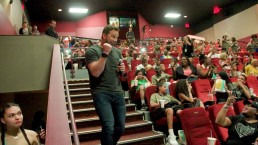
Dinosaurs ripping apart humans = appropriate for children of all ages
It’s been 26 years since “Jurassic Park” first illustrated the dangers of bringing velociraptors back to life, and in that time one generation of film fans has come of age and another has emerged. That means that a group of moviegoers who were first weaned on popcorn pics with that first film have grown up and were eager to introduce their sons and daughters to the magic of a T-rex rampage.
To familiarize a new group to the pleasures of the park, Universal reissued “Jurassic Park” in 3D in 2013 in conjunction with its 20th anniversary. It also primed the pump in a nice piece of corporate synergy, hosting a special presentation of “Jurassic Park” last week on NBCUniversal Networks that included interviews with Pratt and Spielberg. The film and TV stations share a corporate parent in Comcast.
The PG-13 rating made the prospect of seeing pterosaurs treat tourists like birdseed something of a family event. That resulted in an opening weekend crowd that was 39% under the age of 25, a demographic that hadn’t been born or was barely verbal when the first film debuted.
“We’re getting everybody and that includes parents with kids,” said Carpou.
Hollywood take note. That’s how you build a blockbuster.
Making Sense of fragmented audiences
Audiences consume and interact with information in unexpected ways, so you have to be tuned in real-time. Consider what’s going on in the analytics and reports, and out of them. Data is generated and delivered by the same audience you are trying to connect, from video channels, chat, social media and tweets. Paying attention to the ‘vibe’ or body language cues can go a long way. Use them to your advantage. Analytics can be tricky, but they are just the tip of the data iceberg. Keep your cool, be yourself and be responsive. Pick your actions accordingly and maybe it could be the start of an unforgettable relationship.
Yesterday afternoon, Marvel Studios showed some chivalry by releasing a poster (a tweet by president Kevin Feige) congratulating Steven Spielberg and the Universal Studios team, Director Colin Trevorrow and golden boy Chris Pratt for beating the hero team, since their lost their title as the previous record holder. With these numbers, we will be seeing more Jurassic (probably without ‘The Park’) in the future.
How VR is changing storytelling
3D Culture: a new perspective of life
Three-dimensional experiences can be traced to the early 1900s, experimenting with 3D-filmmaking. Around the same time, the concept of “Culture” as we know it now, started to shape up. Both disciplines were trying to create a vivid representation of an object, a situation or behavior in order to understand it. Scientists use mathematics or physics, while anthropologists use social concepts. More than 100 years passed already and we still trying to figure things out.
Virtual reality, 3D experiences, and three-dimensional selfies are part of the normal, so it’s organic to think about culture in a three-dimensional way, or what I like to call, 3D Culture. Borrowing from concepts from 3D modeling, we could say that it’s possible to create a model of an object (situation/moment). We should be talking about a “multiverse” approach, but let’s move in little steps. I worked plenty with 3D artists, XD designers and collaborated with researchers and analysts on multicultural projects, so inadvertently I became a 3D Cultural Analyst, rendering situations into models, creating a mental sculpture to have a 360 understanding. We model culture using our own algorithms (thoughts and perceptions) shape and texture our objects (experiences) and look at it from many angles (situations). Don’t worry if this doesn’t make sense, keep reading, we are almost there.

Our brain is an organic 3D living scanner, we collect information and data from many sources. We model situations, ideas, actions and behaviours based on new input and within our own archives and mental 3D library of emotions, thoughts, memories, sounds, smells and flavors. We give this objects meaning through texture mapping and create high poly experiences. The result is a beautiful, amazing 3D model of who we are and how we see the world. All in real-time.
This mentally interactive, three-dimensional cultural model reflects and shapes our story and how we behave, on a daily basis. Our ideas, thoughts and beliefs, even the music we listen, the food we like or the books we read are part of our 3D cultural model, shaping our identity and framework to our ‘why we do things the way we do’. And it’s passed down from one generation to the next one.
Culture is wide and filled with many layers, and naturally we tend to simplify things pre-modeled objects, royalty free-ideas of what something means. Words come with a significant amount of conceptual baggage. For example, think of the word “Argentina”. Did your mind conjured images of tango, gauchos and delicious steak?…and what about California…Hollywood and golden beaches? or India (colorful dances, spicy food and Ganesha). Or in reverse, the words ‘fiesta’, ‘nachos’ and ‘5 de mayo’ in a single phrase invoques the idea of Mexico. So wrong on many levels. The reality is that words convey powerful notions of “Argentinean” or “Indian” qualities. How people dress and eat is just part of it, and really a very small indicator of all the symbols, traits, diversity and depth that each amazing and unique culture. Also, culture exists beyond its ‘Wikipedia’ country description. Office buildings, universities, shopping markets, public transportation, coffee shops, anywhere people interact and share the same language, slang, interests and values creates culture: a subculture. They can be united by a music style, a game or a concept, food or sports, uniting complete strangers from around the globed, with opposite cultural into a single hearted vision.

Spoiler Alert! you can’t design for everyone.
But we can focus on a subculture and inspire culture from the inside-out, enabling ambassadors. This shift build space for growth, mixing innovation and design with relevant insights into the deeper layers of cultural behavior. Its an opportunity reinvent and a vibrant playground for talent to make better products and services.
People are people no matter which country you are, and you’ll find interests and tastes as diverse as their inhabitants. From gender identification, tradition, decision-making process and concepts of self. We could try to isolate subcultures using this parameters. Spoiler Alert! you can’t design for a whole culture. Appealing to everyone is a waist of resources and time. What we can is to focus on a subculture, inspiring culture from the inside-out as ambassadors. Become and real influencer. A 3D cultural approach allows us to take a fresh look into situations from various directions and views -like a 3D camera moving around a virtual scenario-. so we can identify opportunities and challenges and had a quick understanding without investing much time.
Subcultures thrive within culture and sharing similar values, beliefs or behaviors, but “updated” to reflect their current life experience. Happens a lot with expats for example, were we adapt our ‘mother-culture’ re-significating to continue cultural survival and cultural evolution. “Tex-Mex”, “Chinese-American” “Techno-Jazz” “Newyorican” are everyday simple examples. You can be Argentinian, speak spanish at home, polish with friends, and english at work Italian father and Argentine mother, raised in Buenos Aires, lived in the US half your life and living in Poland. That’s my crazy 3D cultural model.
3D cultural models are a multi-method approach using traditional tools, ethnographic observation, media investigation, data research, social behaviours and sub-cultural pointers to create a playground to analyse key and relevant findings. highlighted by cultural heritage, geographic momentum and social influences to generate a valuable framework to capitalise cultural-data opening new avenues for further research under the cultural-technological evolution umbrella. 3D cultural modelling gives flexibility to change angles quicker without re-formulating the scene, can easily help us calculate effects and behaviours, and get a subculture estimate with a 360 experience perception. This is not overriding classic techniques but a supportive framework to play with those variables, a view of the world through multiple lenses, from the individual to the collective, creating a storytelling that empowers, encourages and represents people transcending time, culture and language, and finally understanding that diversity is the one true thing we have in common.
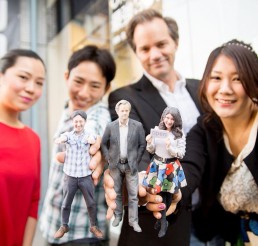
Men Skincare Market
Men Skincare market is becoming an emerging disruptor in the beauty industry, as companies target to expand the half a trillion-dollar market.
Men are the new frontier in the beauty & skincare industry: anti-aging creams or even facial sheet masks are the best hit in Major Cosmetic stores in the mall. More than 37% of American dads (and the percentage goes up to those with two children) say they care about preventing the signs of aging, compared to 23% of men without kids, according to a study released this week that surveyed about 1,000 male personal-care product adult users in the U.S.

While some 95% of men in the survey say they use deodorants and 87% say they use body cleansing products, 70% of men say they use sunscreen/sun protection items while nearly two-thirds say they use facial skincare. Among those between 18 and 44, facial skincare users actually jump to as much as 84%.


Giant fashion brands like COACH or Lululemon have been expanding their product lineup to appeal to the desires of style-conscious men. The male focus for personal-care products has also evolved beyond traditional grooming products, such as razors and deodorants, to anti-aging skincare and even makeup.
In recent years, the notion that men can’t or shouldn’t be using skin-care products or caring more in general about all aspects of their appearance has been receding and with the category currently valued at $122 million. The success of digitally native brands catered directly to men such as Harry’s and popular subscription service Dollar Shave Club* brand created in reveals that “the average men’s grooming routine isn’t about just shaving, but can be aided by using skin-care products.
A few weeks ago, the Edgewell Conglomerate (owners of Schick and Wilkinson razor brand), acquired Harry’s for $1.37 billion as it tries to expand beyond razors to new products like body wash and deodorant. Dollar Shave Club was acquired by consumer products giant Unilever in 2016.
*Dollar Shave Club was created in 2011 in Venice, California, by two friends and is based on delivering razors and other personal grooming products to customers by mail. It delivers razor blades on a monthly basis and offers additional grooming products for home delivery.
Even high-end designers like Chanel have jumped on the trend, launching its first made-for-men skincare and cosmetics line known as “Boy De Chanel” last September.
Men are interested in preventing the signs of aging



If you search for “men anti-aging cream” on Amazon, more than 1,000 results will appear under the beauty and personal care category, spanning products from mass-market and drugstore labels (L’Óreal “Men Expert” and Neutrogena Men) to department store brands like Estée Lauder-owned Clinique for Men sells an anti-age moisturizer for $54. In fact, while the stubble/beard trend has hurt industrywide U.S. shaving product sales, the largest men’s grooming category, demand for men’s skincare items has seen healthy growth. Sales of men’s shaving products were $2.8 billion last year, declining an average of 1.1% a year between 2012 and 2017. In contrast, the annual average growth for men’s skincare products during the same time period was 7.2%, with sales reaching $345 million in 2017, according to Euromonitor data.
Last year alone, men’s skincare product sales jumped an even faster 11%, outpacing growth in all other men’s grooming categories including bath and shower, deodorant, and hair care. In total, men spent a total of $6.9 billion in the U.S. on grooming products last year, Euromonitor data shows.
Men ages 35-44, and especially dads, will drive the overall grooming market demand as they are more invested in the category and less price-sensitive than other groups. Nearly 45% in that age group say they “pay attention to” the personal care products they buy, compared to less than half for the entire male adult group surveyed, according to Mintel.
Larger. brands such as L’Óreal, and Johnson & Johnson’s Neutrogena, Unilever’s Dove, have responded to the market potential for men’s skincare. Retailers aren’t blind to the demand either. For instance, beauty retailers have a separate tab for men’s products, including “anti-wrinkle” serum and other skincare. In April, Target picked men’s skincare brand Oars & Alps among 10 beauty startup labels it would mentor and grow under its startup accelerator program. Target reportedly mentions growth in customer interest in smaller niche brands including those for men.
Products are not coming fast enough: Only 4% of men’s personal care products unveiled in the U.S. last year included anti-aging claims. The gap between the number of men interested in preventing the signs of aging and the number of products with these benefits indicates a significant opportunity.
Men, the new generation of beauty consumers
This includes tutorials from U.K. make-up artist Charlotte Tilbury and Rihanna’s Fenty brand, which have both put out instructions for guys who want to use make-up subtly for a more groomed appearance.
According to Coresight Research, the Asia Pacific market is now one of the fastest-growing regions for men’s grooming and cosmetic product use. Jason Chen, general manager for Chinese online retail site Tmall, told Coresight that across China “supply is not able to meet the demand for male make-up products.”
Nearly 40% of adults aged 18-22 have shown interest in gender-neutral beauty products. More than 56% of U.S. male respondents in the survey, admitted to using some sort of facial cosmetics like foundation, concealer or BB cream at least once in 2018. But beauty is no longer what you’re putting out as ‘ideal beauty.’ Beauty can be anything and anyone. In 2016, shortly after COTY acquired CoverGirl, the brand made history with the launch of its first-ever “CoverBoy” People misconstrues that a man using beauty and skincare products is not masculine, but the truth is that men are becoming conscious beyond looking younger and are interested in looking healthier. People are still intimidated by the aspect of it, but the market is growing faster than ever imagined.
Women still dominate the core skincare market but a greater proportion of Millennial men are using and buying skincare products than ever before. Makeup tutorials and product reviews for men have attracted nearly 5 million viewers to YouTube regularly.
Now over 2.1 million Millennial women (69% of Millennial women) and just over 1 million Millennial men (34% of Millennial men) both use skincare products and also buy some type of skincare product in an average of six months.
The importance of attracting younger consumers to your brand when they haven’t yet settled on a favorite. Millennial consumers are vital for skincare brands looking to grow their market share. Nearly a third of Millennial women are choosing non-major brands for their facial moisturizer and facial cleansing – rates that are significantly higher than the overall market and also their male counterparts of the same age.”

Transforming kids content playground
The game-changer: deliver knowledge
From Tiktok to YouTube, younger generations are influenced by a diet of digital content at a very early age. Media companies are focusing to understand what kind of content is more attractive to this ‘Generation Z’. Getting an accurate track is challenging since the majority of content is consumed on smartphones, tablets, and game console devices that still are not included in the ratings. Besides guessing what content is ‘popular’ or successful, there’s also ad revenue decline. The question is how this will reflect on subscribers, new users, and customers in the long run.
Delivering innovation, and not as a buzzword, is more than tech, apps, or new marketing: is a mindset, on how we approach business and content. As a creative and designer, successful business is how can brands relate with audiences, but going a step forward in how we deliver knowledge. This is the real game-changer.
Educational content, the key to the future
Operators generally target families, becoming key drivers of on-demand offerings. Netflix is one of the largest providers of online children’s content through output agreements, but they produced (or acquired) their own content since Disney+ launched its powerhouse streaming, the same with HBOMax feeding from Cartoon Network lineup. Amazon and Discovery, same story. How can we keep up -and more important- be at the top of the game? One approach is to create a market, understand the market, and leverage products and services to its needs. More than revolutionary, it’s smart. The Danish family-owned business LEGO is a fantastic business example, from associating movie franchises and IP’s with its pint-sized heroes, games, movies, etc, to launching major educational programs and learning products in China, the US, and Europe. We need a LEGO Channel asap.
Inspiring children through creative play and learning
It’s not just about having fun, but also delivering purposeful, problem-solving narrative entertainment. Educators, artists, science experts, and creators need to assemble and inspire the next generation, now. This is one of the main drivers growing both business and quality for kids’ content and media.
A decade ago, The Jim Henson Company created Sid the Science Kid (2008), dedicated to teaching science to preschoolers. PBS and other networks saw the genius in the idea. Today, STEAM programs are a must in every serious school program, even popular programming for kids from three to thirteen relate to this. Fun and great STEAM programming have created a diverse and exciting universe of content to stimulate young imaginations and make all kids feel like they can play at being an inventor, engineer, scientist, or artist.
LEGO® Education SPIKE™ Prime student classes enable kids to develop stronger critical thinking and problem-solving skills
Educational entertainment: a bright future
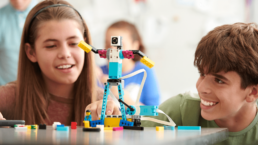
Companies are in creating a new slate of children’s and YA content. Roku, Apple TV, Android TV, and Chromecast join the ranks of Netflix (MC2/Magic School Bus), Amazon (Annedroids/Creative Galaxy/Tumble Leaf), PBS (Sci Girls/Sid the Science Kid/DinoTrain), and Marvel TV with kids’ specific educational content aimed to engage fans building audience strategies for years to come. From integrated educational programs and award-winning content, companies created a whole series of solutions for younger students and help teachers to leverage and engage with their students. We need educational evolution to avoid mental extinction.
Streaming content like “Doozers” (Hulu), focus on “design teaching” based on engineering and design, fantastic machines using recycled resources. Playing creates a perfect opportunity for kids (and adults) to become active, collaborative learners and have fun. Annedroids (Amazon) Its also very much connected to STEAM curricula. Kid-scientist Anne has invented and built her own amazing androids in her backyard lab and enlisted the help of other kids in the neighborhood.
Xbox, more than games
Even Xbox users already spend more time watching video than playing games with the device and heavyweights like Nickelodeon, Hulu and Dailymotion are partnering to create another avenue to connect with their audiences. Tiktok is pushing to bring premium content and live streaming services to sell advertising packages, and even Disney and Saban invested in a viral content platform “Playbuzz” to create and distribute content into social media outlets.
Also, the NFL and the MLB are going after young audiences, encouraging their stars to reach out to fans via Twitter, Instagram, and Snapchat. The focus is to motivate youngsters who are not watching football or baseball on TV (but spending hours on digital) to watch streaming matches online and on mobile. NBCU made a savvy move announcing a consolidated upfront selling advertising across platforms and marketers are targeting interrelated audiences.

Xbox delivers a solid interface featuring all entertainment in one place, from games to favorite streaming, apps and the latest movies.
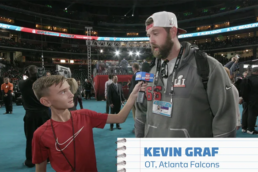
Sports Illustrated Kids interviews Patriots and Falcons at Super Bowl LI media day in Houston.
These initiatives serve both content and business. The result is much more efficient kids content, generating deeper engagement, and building revenue streams outside the traditional media universe.
Today is the streaming revolution, tomorrow maybe be something else, but innovation will always be the constant. Is the ability to transform the business and identify what plays the best. A thought from Viktor Frankl comes to my mind: “When we are no longer able to change a situation, we are challenged to change ourselves”.
Creating tomorrow for the next generation
What kind of resources are we providing today so the next generation can make the right decisions, develop leading skills and choose the right opportunities for them in a world overloaded with choices and information. The key starts with the right mindset and the best set of tools, both intellectual and emotional. Let's dive in...
Recalculating your thoughts
We value intelligence, personality, and character. But what is it? Luck, chance, genetic predisposition? Some believe success is based on natural abilities, others, on learning those abilities, or even the circumstances you were born. But identity and how we define ourselves are the building blocks of our future. This can change everything. What we ‘think’ of ourselves is who we think we are, and our conscious and unconscious thoughts affect our decisions, especially at work, in our careers, and in the direction of our future. Doesn’t matter if you are 7 or 47, those beliefs and mindsets will guide your steps.
We all have different situations, but those conditions are not set or final, they are a starting point. And that’s where your ‘mindset’ comes in handy. What we think and believe of ourselves is what’s happening: where you are right now is a result of that.
Changing your beliefs can have a powerful impact on your mindset. Imagine if you could “recalculate” our destination, and how we relate to others, and make decisions -career or personal ones-. Commonly, a “mindset” is associated with entrepreneurs. And that’s correct, but it’s just the tip of the iceberg. Learning, overcoming, trying. Imagine what would happen if you think of failure as a learning opportunity?
Our focus should be on inspiring kids to develop their own abilities, confidence, and possibilities so they can find their own mission, understand value, and whatever success means for them. And even in the most adverse conditions or failures, kids (and adults) will be able to find their way and purpose.
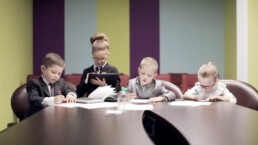
More than skill, its a vision
Building a mindset is more related to ‘purpose’ than to a set of skills. Mindset is simply a belief system. It’s an attitude, disposition or tendency that a person adopts to respond to challenges, tasks, and opportunities. An entrepreneurial attitude is at its core level, resolving a problem by working out a solution. A mind is inspired by belief, that inspires others. Confident and positive, creative, resourceful, and resilient, capable of distilling concepts and ideas into actions and decisions, generating momentum and an atmosphere for things to happen. An entrepreneurial mindset goes beyond creating a business or a start-up, an entrepreneurial person is someone who terraforms their environment, decisions, and actions into creating its own future and drives cultural changes, from one family to an entire nation, to one succesful product to a lifestyle revolution.

Learned skills or natural traits?
Some people look at change and see opportunity, others look at problems and see solutions. Why is that? Some, when challenged, rise above, while others paralyze by doubts and indecision. Although we are all born with a specific set of genes, with no control over our genetic allocation, we know lifestyle choices and different experiences through development and maturity can influence gene expression and thus exert influences over behavior.
Everyday experiences instill the “entrepreneurial” mindset, beginning within our family, and later when we go to school, college, the friends we have, and finally at the workplace. The sooner you start to understand and use these traits, it becomes a habit.
While entrepreneurship skills can be learned, and become a successful business entrepreneur, a classroom environment has its limits. Inspiring a mindset is a hands-on process, especially when you focus on leadership (and team development). Entrepreneurial instincts are naturally incorporated at home, by family members or observing other people, even friends. They may not use MBA or Masters terms, but they do understand the actions that matter to achieve success. And it focuses not only on their personal success but on helping others to reach their success.
Where do we start?
The first step is to do a bit of “spring cleaning’, let some fresh air into the mind. Take a moment to look at your ‘mindset’ and visualize it. Are you aware of your abilities? how do you perceive your value? What do you love to do (having an ice-cream sandwich doesn’t count… unless you are planning to develop an Ice cream empire, you see, a passion can become a skill). Normally we connect the term “successful mindset” with entrepreneurs, but there’s so much more.
Strengthen confidence and trust in your abilities will boost your decision-making skills, your learning skills, and your time management. Imagine having more time to improve something you like or do something completely new. The simplest change in your mindset can have a profound impact on every aspect of your life. Imagine if you could “recalculate” your direction? From the way relate to others, the way you make decisions, career or romantic ones.
Practical application: if you feel brave enough, write down a list of your skills -even if it sounds small or unimportant- You might discover hidden or untapped skills. Write also what you are good at, and what you’ll like to improve. Also, exercise looking around. Focus on small situations and things that are important to you. Successful moments, mistakes…what is worthy to repeat and what to do differently. Understanding the value you could bring to your situation is the springboard to your future. Even if is a small thing, the payoff is giant. It will literally change the course of your actions. Learning, overcoming, expanding your tent. Imagine what would happen if you think of failure as a learning opportunity? or an obstacle as a chance for developing skills. The sky is the limit.
Creating an entrepreneurial mindset means inspiring people to believe in themselves and to dream big about what their future could be. It’s guiding people, teams and organizations to see the potential in ideas and situations, both individually or part of a group or community. Its creating a future.

Transforming Anxiety into Creative Energy
Fast-paced enviroment, calendars max-out with meetings, full inbox, and 4pm calls leave us with very little time for strategic activities. Even the best jobs and the best teams experience this pressure in one form or another. The harder you work and the more motivated you are to succeed, the easier we feel we have no time to accomplish what is important to us and also to the organization advance. A week goes too fast and too furious.
Time constraints can get the better of you, and this anxiety bleeds over into how we interact with people. We want to inspire our team, but we literally don’t have the time. How can we find the precious balance, be a good leader and still get things done? The answer maybe a bit hidden in between of meetings and dayly routine.
Small moments, big opportunities
Every day is a combination of smaller moments. So if we take those moments apart, into smaller, more manageable situations we can make more sense of our busy schedule. With this deconstruction process we can take any situation apart and then assemble it back together in new and unexpected ways (my partner specializes in fashion pattern deconstruction and was the inspiration for this idea). Elements on a situation may have been intermingled and the way you deal with one will impact on other parts of the problem.
How we use the small moments and brief interaction in our day? Small gestures and invisible situations can bring out the best leadership inspiration. We cannot fix everything, but we can make a difference. It makes me think of the small pebble creating big ripples in the water. I dont think even the pebble knows what is creating behind. Leading and inspiring is something you get better with practice and its done in step by step.
The first thing is to identify what these small moments in our everyday conversations and interactions at work, and even at home. We are too busy to take time but with little attention you’ll see them very clear as Neo sees the ‘Matrix’. You can seize a small moment into a learning opportunity.
Finding the ‘smaller parts’ can be a challenge, but once you identify this, everything becomes much easier and more productive.

Making space in our busy schedule is a challenge, but this terraforming creates an opportunity to growt and a vibrant playground for talent to make better products and services. Creativity is an energy and whether you realize it or not, you emit and receive energy. We have an electromagnetic field in which creative energy flows naturally, but when the polarity is disrupted our team creative energy system is affected. Is vital to pay attention, because is subtle but escalate quickly.
Become a power converter that change anxiety into creative energy
One of our focus, besides deadlines, meetings and product development is to motivate team members to grow, encourage intelligent dialogue, infuse confidence, and empowering the reach their best of their skills.Everything we do is fueled by it and foster creative energy is vital to the team and the work.
Find quick opportunities to grow a creative playground
-
Don’t try to solve the problem, listen first.
-
Create a space for dialogue and growth.
-
Give specific, constructive feedback.
-
Take time to know people.

Don’t try to solve the problem…first listen: When someone comes to you for help, we rush giving people suggestions when they ask for help. Ask them what they think would be a good solution and then create a space to implement it or try it out. By this, the team member can develop ownership of the solution, as they learn how to seize the opportunity and make a change.
Create space for dialogue and growth: People are afraid to admit a mistake because of the consequences, understandable. But when someone comes and says, “I think I made a mistake.” Don’t jump at it with all your artillery. Create an environment for growth and show them you trust them, even when there’s a mistake in the middle. We all make mistakes, remember. Think about the time you screwed-up and how you’d liked to be treated. This is a critical moment, especially in the process of innovation where failure is essential to the exploration process.
Give specific, constructive feedback: Concentrate on positive and specific suggestions on the situation and behavior. Not the person. Kindness and accuracy are important. Finally, what was the impact of the conflict or situation? Feedback is not criticism or praise, it is about observation. It’s timely and specific. It describes but doesn’t judge, and brings an understanding of the situation or issue. It’s one of the simplest yet most effective ways to develop others, creating a pattern of learning and growth.
Take time to know people: teams are made of people, personalities and attitudes. Recognize the diffences and look for ways to connect similar interest. A quick ”How are you, how’s everything? can open up a dialogue. Kindness is never out of fashion, and a bit of empathy can overcome frustrations and give you understanding on and how to offer support. It’s about build connections to inspire growth. Especially with creative teams, artists, designers, developers, well…everyone. Strive for authenticity, not perfection. Remember that conversation is with people, not to people.

Educación en tiempos de Pandemia
Educación Digital: desafio o evolucion?
CoVid19 cambio definitivamente las estructuras educativas. Escuela y hogar (y tambien trabajo), se ha transformado en un mismo lugar. Según la UNESCO, más de 861.7 millones de niños y jóvenes en 119 países se han visto afectados al tener que hacer frente a la pandemia global que nos ha sacudido este año. Millones de familias en EE.UU. forman parte del 1.7 millón de niños que hacen educación en el hogar (homeschooling). Y el debate politico y social respecto a la seguridad de enviar a los niños a clase, todavia sigue siendo un tema de polémica. Especialmente en America Latina e India donde la pandemia esta en su momento mas critico.
Cambiando la mentalidad del aula: Los nuevos métodos y profesionales de la educación.
La innovación en materia de tecnología educativa han impactado en cómo los alumnos y profesionales quieren aprender. Aulas virtuales, dispositivos móviles, lectores digitales, VOD, video games y contenidos en “la nube” alimentan a un mercado ‘hambriento’ de innovación.
Un factor clave para la innovación es la tasa de adopción de nuevas tecnologías por parte de la comunidad joven. Los millennials que buscan insertarse en el mercado laboral, traen un conjunto de expectativas acerca de cómo aprender y colaborar. Más aún, ellos nos enseñan que el aprendizaje se logra mejor en incrementos continuos, en función de la demanda/necesidad de aprendizaje y capacitación de los alumnos.
Gracias a la evolución de la tecnología y la aparición de múltiples dispositivos y diversos medios de comunicación, una de las claves para hacer que el aprendizaje sea eficiente y eficaz es la velocidad, disponibilidad y accesibilidad de los contenidos. Los empresarios y compañías reconocen la oportunidad de aprovechar el mercado de educación “adulto”, no solo aumentando la inversión en estos productos sino también en el desarrollo de contenidos y experiencias de aprendizaje “on-demand”.
Esta tendencia no es una moda a corto plazo, relacionada con una plataforma de moda, sino más bien, un cambio de paradigma que tendrán un impacto profundo en el mercado del futuro.
La inversión en tecnologías educativas acompaña la capacidad y necesidad del alumno de consumir contenido rápido, cuándo quiere y donde quiera. Herramientas para desarrollo y capacitación, entrega de contenidos, lectores digitales, bibliotecas virtuales, juegos y sistemas de administración basados en la nube han impulsado un alto nivel de innovación educativa.
Gran parte de la inversión proviene de empresas que tradicionalmente han invertido educación post-secundaria, pero ahora están cambiando su enfoque hacia la capacitación laboral. La razón principal de este cambio está directamente ligada a la manera de consumir contenidos, ya que la capacidad y accesibilidad de contenidos y conocimientos trasciende los niveles de edad, alcanzando el mercado de la educación de adultos y la formación corporativa.
ESTUDIANTES EN LAS NUBES.
con la llegada de los dispositivos móviles y la modalidad de contenidos por demanda, las bibliotecas virtuales han crecido rápidamente. Este rápido crecimiento significa que los alumnos tienen acceso a prácticamente cualquier tipo de contenido de aprendizaje que deseen en cualquier momento que quieran -y en cualquier dispositivo- ya sea un celular o una tablet, y no están más limitados a una computadora de escritorio o un aula física. La abundancia de información puede ser algo positivo para los estudiantes, pero en el caso de la capacitación profesionales debe tener una estrategia que garantice a los alumnos un contenido diseñado especialmente para sus necesidades de trabajo y objetivos de capacitación.
PERSONALIZAR LA EXPERIENCIA DE APRENDIZAJE.
Aprendizaje adaptativo es acerca de la personalización de la experiencia de aprendizaje. Mediante el uso de técnicas de aprendizaje adaptativas, podemos reducir el tiempo que toma a los alumnos para que dominen, eliminando la necesidad de cubrir contenidos obsoletos o ya conocidos. Esto mejora la efectividad de los programas, ya que el alumno sólo se centra en lo que es necesario.
Los enfoques tradicionales de desarrollo de contenidos se focalizan en un ‘talle unico’ en vez de adaptar el contenido a las necesidades del alumno. La experiencia de capacitación busca la personalización del contenido, pero para ello, la plataforma debe poder replicar esta experiencia ajustando la información en base a elecciones o respuestas anteriores del alumno. El éxito futuro de aprendizaje adaptativo es no está sólo en el diseño de la tecnología, sino en el diseño del contenido. El contenido debe ser acortado y modificado en los objetos de aprendizaje, consumida según las necesidades del alumno.
LA EXPERIENCIA DE APRENDIZAJE: MENTORÍAS
La ciencia del aprendizaje nos ha revela que una de las técnicas más eficaces para aumentar la retención y la aplicación de un contenido es ampliando la experiencia de aprendizaje a pre y post-capacitación. El lugar de estudio y trabajo sigue evolucionando con la aparición de nuevas generaciones y nuevas tecnologías, desarrollando una cultura de aprendizaje más inclusiva.
Las empresas valoran el desarrollo interno de líderes para el futuro, y el conocimiento institucional se transmite a nuevos talentos. Una de las maneras más eficaces para transferir conocimiento propio es a través de mentoring y coaching. Y el viejo dicho es cierto, la mejor manera de aprender algo nuevo es enseñándolo. La tutoría no sólo desarrolla los alumnos, sino que también es una forma de desarrollar talento actual del que enseña.
Change the color to match your brand or vision, add your logo, choose the perfect layout, modify menu settings and more.
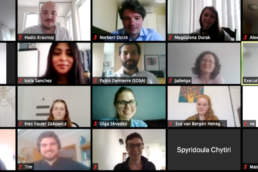
EVOLUCIÓN DE LAS MECÁNICAS DE JUEGO
Enseñanza a través de medrosos lúdicos mejora la motivación, el compromiso y la retención de conocimientos. La pronta ejecución de los juegos se centró en la sustitución de la experiencia en el aula con un juego. El siguiente paso evolutivo en el mundo de los videojuegos nos permitió aprender a incorporar mecánicas de juego en programas de aprendizaje. El corazón un juego atractivo (video-games) es una buena historia que atrae a los jugadores, apelando a sus motivaciones y emociones. La evolución de la teoría de juegos ha encontrado que utilizando el principio de la narración y la participación conecta las emociones del alumno mientras aumenta su participación y asimilación.
CLASES PEQUEÑAS, GRANDES RESULTADOS.
Con la popularidad de las plataformas virtuales y programas de formación en línea los modelos de aulas tradicionales van evolucionando. La razón de una clase con muchos alumnos era para amortizar los costos fijos asociados con un instructor y el aula. Ahora las necesidades del negocio y las necesidades de los alumnos están alineadas. La formación de profesionales está conectada directamente con las necesidades del mercado laboral, y con la comprensión de esta necesidad, podemos mejorar el rendimiento académico del alumno.El desafío es poder desarrollar contenidos que se adapten a las necesidades del alumno.
La experiencia educativa necesita prepararse para el futuro del aprendizaje, quizás no sabemos cuál será la tecnología de aquí a un par de años, quizás sea una tableta holografía de VR, no lo se. Pero el futuro está en conectado con la experiencia colaborativa y social. Las escuelas del futuro quizas tengan clases online con estudiantes ubicados en diferentes o incluso diferentes países. La tecnología no debe ser una barrera para la enseñanza, o reducida a un dispositivo o una plataforma, sino como un viaje cambio, crecimiento y evolución social.


